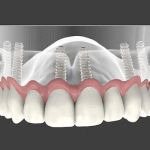- 1-Why-Does-Tooth-Pain-Occur-After-Eating-Sweets
- 2-Tooth-Decay-and-Cavities
- 3-Tooth-Sensitivity-and-Exposed-Dentin
- 4-Gum-Recession-and-Root-Exposure
- 5-Cracked-or-Damaged-Teeth
1. Why Does Tooth Pain Occur After Eating Sweets?
Experiencing tooth pain after eating sweets is a common concern that can stem from various dental issues. The sensation often signals that the teeth or surrounding structures are compromised. Sugar interacts with bacteria in the mouth, producing acids that can irritate sensitive areas or worsen underlying problems. Understanding the causes behind this discomfort is essential for effective management and prevention.
For many, this pain is a warning sign indicating the need for improved oral hygiene or professional dental care. Without timely intervention, what begins as mild discomfort can escalate into serious dental problems affecting overall health and quality of life.
2. Tooth Decay and Cavities
One of the most frequent causes of tooth pain after consuming sweets is tooth decay. Sugar fuels harmful bacteria that generate acids, eroding the enamel and creating cavities. When these cavities reach the sensitive inner layers of the tooth, they trigger pain, especially upon exposure to sugary substances.
According to dental health experts, untreated cavities can lead to infections and even tooth loss. Therefore, early detection and treatment are crucial. Patients who notice sharp pain or lingering discomfort after sweets should seek evaluation to prevent worsening decay.
3. Tooth Sensitivity and Exposed Dentin
Tooth sensitivity occurs when the protective enamel thins or the dentin beneath becomes exposed. Dentin contains microscopic tubules that transmit sensations to nerves, causing sharp pain when sweets touch these areas. This condition may result from aggressive brushing, acid erosion, or aging.
People suffering from sensitivity often describe pain as sudden and fleeting but intense. Specialized toothpaste, fluoride treatments, and gentle oral care routines can alleviate symptoms. Recognizing sensitivity as a cause of sweet-induced tooth pain helps tailor effective solutions.
4. Gum Recession and Root Exposure
Gum recession exposes the roots of teeth, which lack protective enamel and are more vulnerable to stimuli such as sweets. The roots have nerve endings that can cause discomfort or sharp pain when exposed to sugary foods. This condition often develops due to periodontal disease, improper brushing, or aging.
Maintaining healthy gums through regular dental visits and proper hygiene is vital to prevent recession. Treatments may include deep cleaning or gum grafts to restore protection and reduce pain associated with sweet consumption.
5. Cracked or Damaged Teeth
Cracks or fractures in teeth create pathways for sugar and bacteria to reach the inner sensitive areas. Even small, unnoticed cracks can cause pain after eating sweets as the sugar penetrates the damaged tooth structure. Trauma, grinding, or biting hard objects often cause these fractures.
Dental professionals emphasize the importance of early diagnosis using X-rays or specialized tools to prevent complications. Repairing cracks through bonding, crowns, or other restorative procedures can resolve pain and protect teeth.
6. When to See a Dentist for Sweet-Related Tooth Pain
Persistent or severe tooth pain after eating sweets should prompt a dental consultation. Delaying treatment risks aggravating underlying issues and may lead to costly procedures. Signs that warrant immediate attention include swelling, fever, continuous throbbing, or pain interfering with daily activities.
Sharing your symptoms with a trusted dental professional, such as those at Dentistry Toothtruth, can help identify the cause and develop a personalized care plan. Early intervention not only relieves pain but also preserves your long-term oral health.
Understanding the causes of tooth pain after eating sweets empowers you to take timely action and maintain a healthy smile. With proper care and expert support, sweet indulgences can be enjoyed without discomfort.







 Joliet Dermatology4.0 (135 review)
Joliet Dermatology4.0 (135 review) Manhattan Dental Arts4.0 (394 review)
Manhattan Dental Arts4.0 (394 review) Polaris Dental Care4.0 (170 review)
Polaris Dental Care4.0 (170 review) Grzybicki Family Dentistry0.0 (0 review)
Grzybicki Family Dentistry0.0 (0 review) Thunderbird Kid's Dentistry and Orthodontics4.0 (835 review)
Thunderbird Kid's Dentistry and Orthodontics4.0 (835 review) Montclair Perio & Implant Specialists: Anne Hartnett, DDS0.0 (0 review)
Montclair Perio & Implant Specialists: Anne Hartnett, DDS0.0 (0 review) The Importance of Oral Health Education During Pregnancy for a Healthy Pregnancy
The Importance of Oral Health Education During Pregnancy for a Healthy Pregnancy Best Tips for Brushing Your Teeth Properly for Healthy Gums: Essential Techniques for Oral Health
Best Tips for Brushing Your Teeth Properly for Healthy Gums: Essential Techniques for Oral Health Why Skipping Dental Checkups Can Lead to Bigger Oral Health Problems
Why Skipping Dental Checkups Can Lead to Bigger Oral Health Problems Advantages of Porcelain Dental Restorations
Advantages of Porcelain Dental Restorations How Can Diabetes Cause Tooth and Gum Problems? Preventing and Managing Oral Health Issues
How Can Diabetes Cause Tooth and Gum Problems? Preventing and Managing Oral Health Issues Healthy Habits for Promoting Good Oral Health and Hygiene: Tips for a Healthy Smile
Healthy Habits for Promoting Good Oral Health and Hygiene: Tips for a Healthy Smile